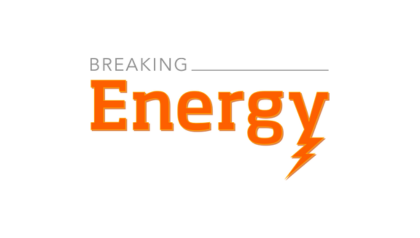
Well, that was painful. The House and Senate on Friday finally approved and President Obama signed into law a short-term extension of the payroll tax cut and federal unemployment benefits, and staved off a steep cut in pay to Medicare doctors. But, once again, Congress took a tortured path. And on legislation that, in the scheme of things, was a modest stopgap measure whose main provisions enjoyed bipartisan support. After nearly a week of adamant House Republican opposition, Speaker John Boehner relented Thursday night, announcing that he and Senate Majority Leader Harry Reid had struck a deal on a bill that the Senate passed on Dec. 17. This article is a linkout. Photo Caption: Air Force One lifts off shortly after President Obama signs the Payroll Tax Cut Extension.
Oil
Sign up and get Breaking Energy news in your inbox.
We will never sell or share your information without your consent. See our privacy policy.
The Solyndra bankruptcy led to a sudden frenzy of attention for government incentives for the renewable energy industry.
But even before the CIGS solar panel manufacturer announced it would be laying off all 1,100 of its employees and shutting down operations, private equity firm DBL Investors set out to look at the history of government incentives for the renewable energy industry and compare the numbers with data on government support of fossil fuels and nuclear power. Keep reading →

At a press conference on Dec. 7, President Obama warned congressional Republicans not to attach a controversial crude oil pipeline from Canada through the U.S. to a bill extending a year-old break on people’s payroll tax. “Any effort to try to tie Keystone to the payroll tax cut, I will reject,” the president said, standing next to his Canadian counterpart, Prime Minister Stephen Harper. Ten days later, Republicans, with the help of sympathetic Democrats and lawmakers who just wanted to get a deal done, did just that. By a vote of 89 to 10, the Senate voted on Saturday morning to extend the payroll tax cut for two months. Included in the bill was language requiring the State Department to issue a permit within 60 days to proceed with the 1,700-mile oil pipeline. The inclusion, on its surface, goes directly against the president’s veto threat. But the White House has no plans to torpedo the measure. At a briefing with reporters following a short statement by the president, senior administration officials made the case that their position on the pipeline had not been affected. This article is a linkout.

The Keystone pipeline project is back in play as part of the payroll-tax cut debate, and Congressional Republicans say it would create jobs. But there’s a wide range of estimates, with one forecast that Keystone could actually cost jobs. The 1,700-mile long pipeline would transport crude oil from Canada’s oil sands region in Alberta to refineries along the U.S. Gulf Coast. The Obama administration pushed back the project last month pending a review from the State Department, but Republicans want to bring it back as a sweetener to approve an extension of the payroll-tax break and federal unemployment insurance. The House passed a measure Tuesday that would tie tax cuts to Keystone approval. TransCanda (TRP), the company that wants to build the pipeline, says Keystone would create 20,000 “direct” jobs. That includes 13,000 construction jobs and 7,000 jobs making stuff like pump houses and the pipe itself. This article is a linkout.

Last night the House of Representatives passed a payroll tax bill, but at the same time they took Americans’ health and safety hostage. They used a bill Congress feels it must pass to jam through two riders that would weaken protections against polluters.
One rider would allow industrial facilities to release more mercury, lead, and other toxins into the air we breathe. The other would enable the Keystone XL pipeline to go through the American Heartland without the environmental and safety review the White House deemed necessary. Keep reading →
Corn and soybeans are the major crops used to produce biofuels and are best grown in the corn belt, which is Midwest-based.
By Shifra MincerCorn and soybeans are the major crops used to produce biofuels and are best grown in the corn belt, which is Midwest-based.
@ENERGY

Even as Canada withdrew from the Kyoto Protocol this month–during the United Nations Climate Change Conference in Durban, South Africa–the European Union set an aggressive energy roadmap to reduce greenhouse gas (GHG) emissions to 80%-95% below 1990 levels by 2050.
The transformation will make Europe less dependent on external energy supplies. Keep reading →

In a press briefing on Tuesday, White House Press Secretary Jay Carney made clear that President Obama would veto a GOP-proposed payroll tax if it included a provision to accelerate the timeline of the Keystone XL pipeline.
A project of TransCanada the Keystone XL pipeline was intended to travel 1,700-kilometers from Alberta’s oil sands to the Gulf Coast in Texas to transport 700,000 barrels of oil a day. Much of the pipeline is already lying on the ground in North Dakota, waiting to be constructed. But this November, Obama delayed a decision on construction of the pipeline, pending further review and delaying it till after the 2012 presidential elections. Keep reading →

New discoveries of potential “tight oil” deposits are being made around the US, and no one is sure just how much oil the nation has waiting in geological formations that can now be tapped through new technology.
But the discoveries have already created one boom area, bringing a sparsely populated region of North Dakota gushes of jobs, people and problems no one foresaw. Keep reading →

US oil imports will continue to decline as domestic production rises, and by 2040 the US could be importing crude only from Canada, according to the latest forecast from ExxonMobil.
That forecast depends on off-shore, Arctic, oil sands and unconventional resources being available for development in coming decades. Keep reading →
